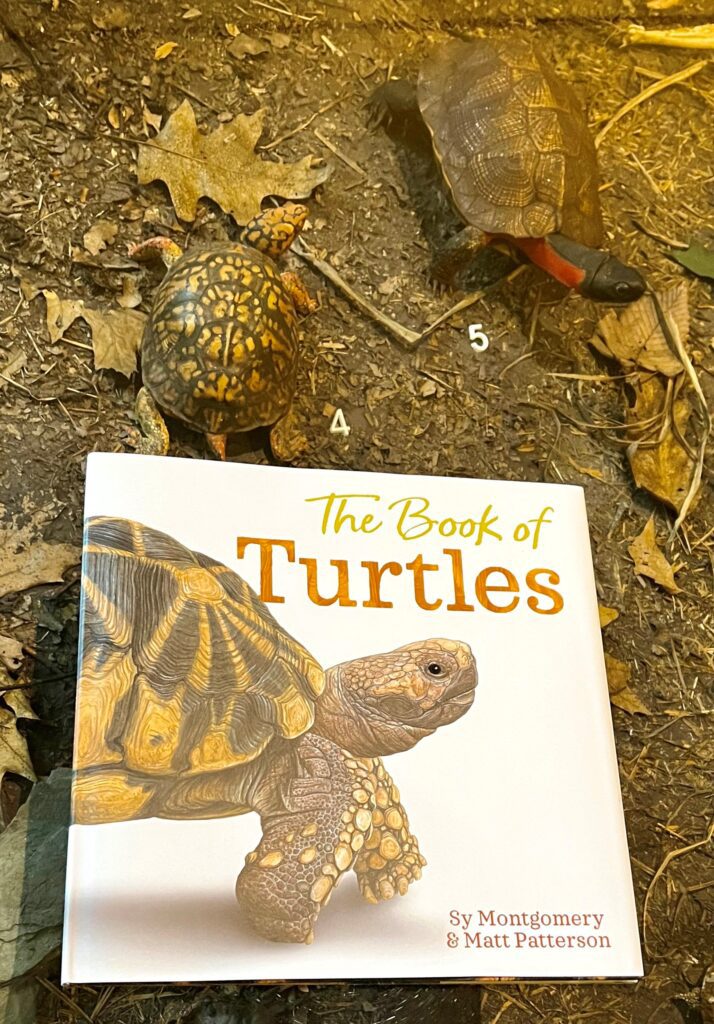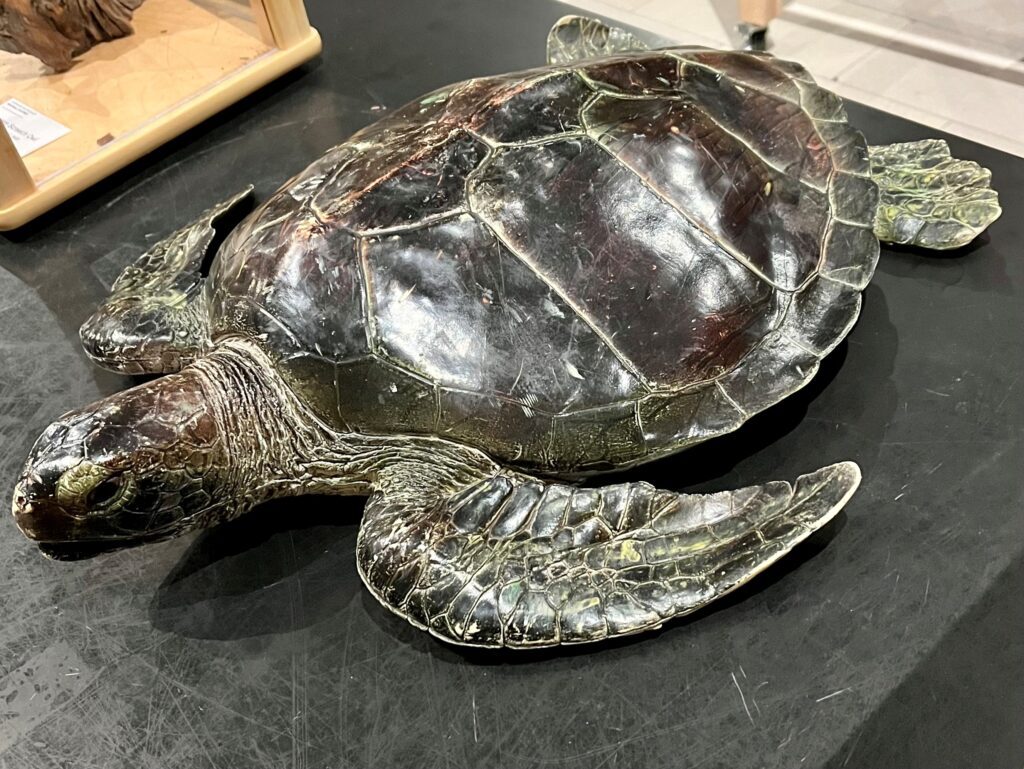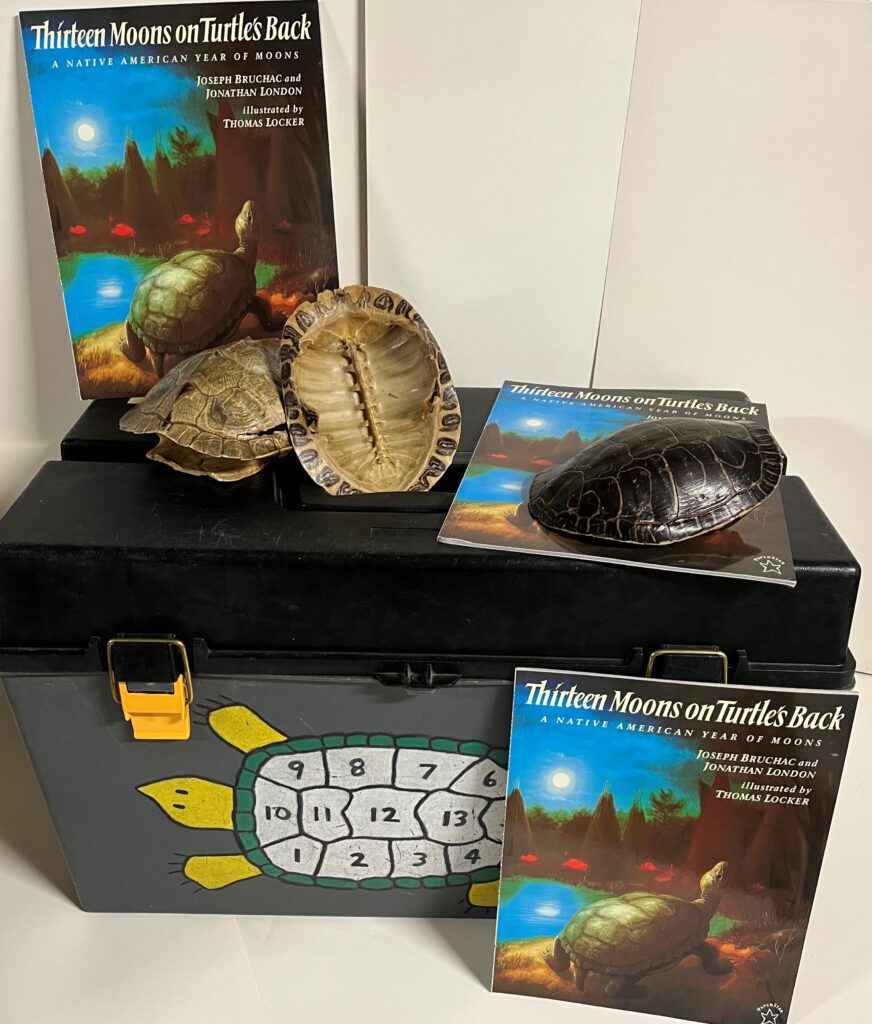by Patrick McShea
This fall, for elementary students in the Meadville area, visits to the school library became opportunities to learn more about turtles. Beth Heuchert, Elementary Librarian for three buildings in northwestern Pennsylvania’s Crawford Central School District, was the force behind the collective concentration on the shelled reptiles. She selected The Book of Turtles, a new work by Sy Montgomery and Matt Patterson (Clarion Books, an imprint of HarperCollins Publishers, 2023), to be the focal point for September library sessions. Then, to establish three-dimensional, and in some cases touchable, extensions for the book’s 39 pages of colorful illustrations, she borrowed a wide range of turtle-related materials from the museum’s Learning Collection.

In explaining her joint use of children’s literature and museum materials, Beth outlined multiple activity strands for engaging a wide age range of young learners.
With the Kindergarten and grade 1, I read aloud a story book about a turtle, Truman, by Jean Reidy, followed by The Book of Turtles–which I read over a couple of classes. Students looked at and got to touch the sea turtle shell and model, along with the turtle taxidermy mounts in the cases. Students shared what they noticed about the turtles and what facts they remembered. Then they drew their own turtles (adding patterns) or colored in a picture of an Eastern box or sea turtle.
With grades 2 through 6, I tried out something new involving centers in the library. We read The Book of Turtles as a group, and then the students went to their tables where they worked while taking turns to examine copies of the book. Two of the centers were ‘research’ tables. These spaces featured materials from the museum along with other books on turtles.
The complementary resources enabled students to write down or draw what they observed, answer questions, and generate lots more questions about turtles for future research. Other centers were set up to encourage Independent Reading, and a Read and Create Center where students made turtles out of LEGOS, created origami turtles, turtle-themed tangrams, or turtle images with standard drawing materials.

Connections between freshwater turtle shells from the museum and a full-page turtle skeleton illustration in the featured book were particularly important. In combination, the touchable specimens and the detailed image provided reinforcing lines of evidence for interpreting the spine and ribs as inseparable bone components of a turtle’s shell.
A cultural link between the museum materials and The Book of Turtles also deserves mention. The work’s concluding illustration, a full-color depiction of turtle bearing a vegetated island atop its shell, is captioned with a broad historical reference: Ancient stories from around the world tell us how people believed the Earth was carried on the back of a turtle. For some students, the statement provided a perfect segway into the exploration of an older turtle-focused book, Thirteen Moons on Turtle’s Back, by Joseph Bruchac and Jonathan London, with illustrations by Thomas Locker.

By dedicating the now 31-year-old work “To the children of Turtle Island,” the authors honor the shelled reptile’s foundational role in Native American legend. The poetic text, in conjunction with a concluding page titled, “A note about this book,” draws reader attention to another aspect of turtle anatomy, the thirteen large scales that create the outer surface of a turtle’s carapace or upper shell. As the book note explains, Many Native American people look at Turtle’s back as a sort of calendar, with its pattern of thirteen large scales standing for the thirteen moons in each year.
A colorfully illustrated toolbox bearing turtle shells and twenty copies of the book was part of the loan from the museum. The books’ use, under the direction of a skilled elementary school librarian, pushed turtle activities into interdisciplinary territory where students learned something about how changing seasons and the passage of time are marked in Native America cultures.
Learn more about this classroom-enriching program.
Patrick McShea is an educator at Carnegie Museum of Natural History.
Related Content
Museum Connections to a College Lab
Wolverine: Status Check For a Tournament Champion
Carnegie Museum of Natural History Blog Citation Information
Blog author: McShea, PatrickPublication date: November 8, 2023
